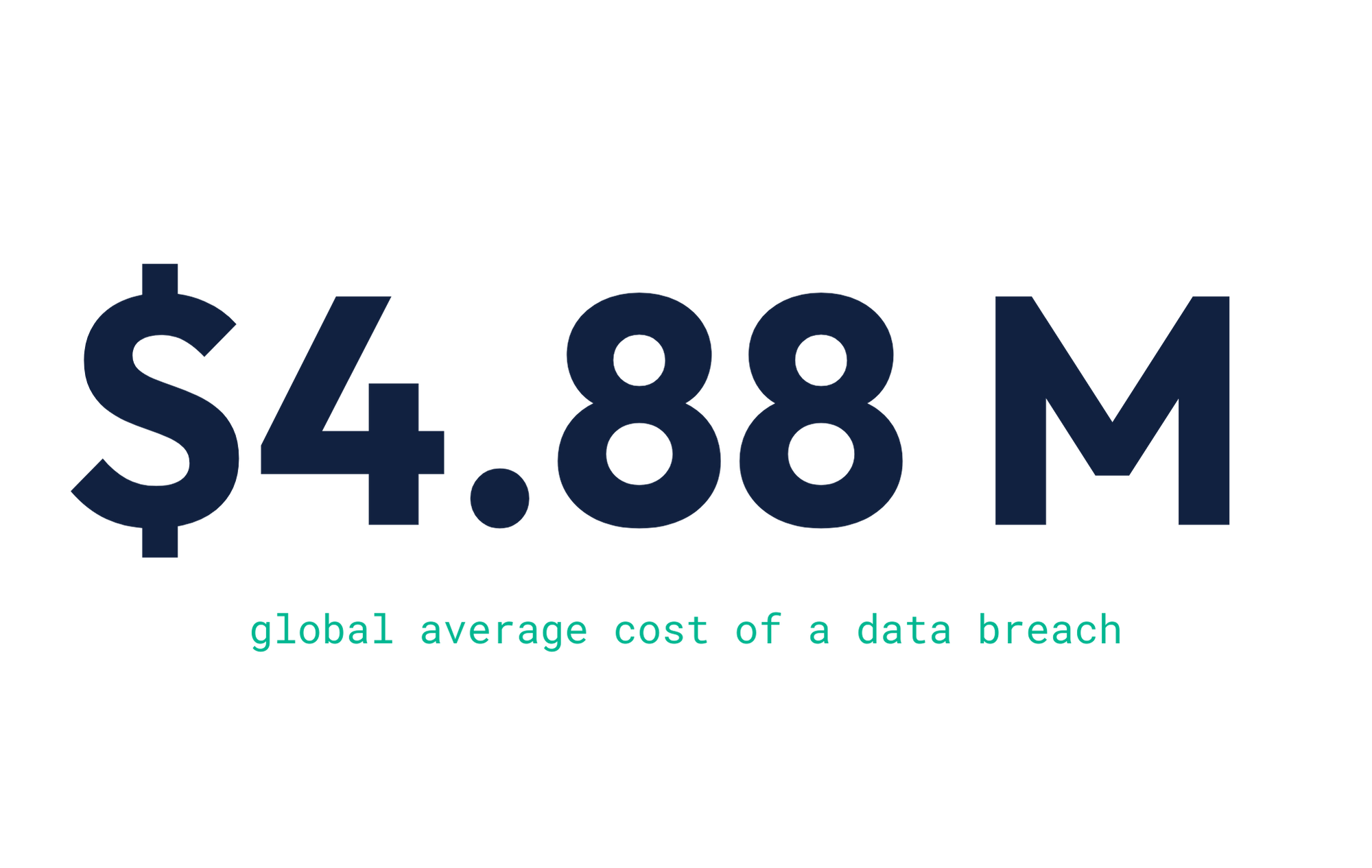Last updated: October 10, 2025
Key Takeaways
- The average cost of a data breach in the United States is $9.36 million, with the global average reaching $4.88 million—a high price tag for any business to pay.
- Cybersecurity threats have become so costly to businesses due to a hefty combination of legal fees, data recovery costs, reduced employee productivity, and other factors that take a toll on finances, operations, and business reputation.
- The biggest cyber threats today include social engineering attacks, configuration errors, bad cyber habits, and ransomware, among others.
- Fortunately, businesses have more options than ever for cyber threat prevention. Risk assessment practices and checkups can spot potential issues before they become a million-dollar problem.


What Is a Cyber Attack?
A cyber attack is a malicious action designed to steal, disrupt, collect, destroy, or alter a company’s data and applications via unauthorized access to systems or networks. Cyber attacks typically come from bad actors that are external to a company, but they can sometimes come from the inside as well. Businesses of all sizes can benefit from learning how to prevent security threats.
According to recent data breach reports, the average global cost of a cyber attack that resulted in a breach was $4.88 million in 2024. Considering that this is a rapidly expanding problem, the cost may become even higher in the near future. It is also worth noting that the United States has the highest average data breach cost of any country—$9.36 million—meaning American citizens have the most to lose should they fall victim to a cyber breach.
Why are cyber breaches so expensive? There are hundreds of cost factors to account for when a cyber breach occurs, but some stand out more than others. In the most expensive data breaches, companies often experience heavy losses related to:
- Legal fees
- Loss of brand equity
- Data recovery
- Increased customer turnover
- Drain on employee productivity
Because cyber attacks will continue to rise, cybersecurity insurance has become increasingly appealing to both small and large enterprises. With more and more people turning to insurers for help, the pressure is on. In this blog, we will discuss the true cost of cybercrime and explain how insurers and their clients can effectively navigate this perilous landscape.
How Much Does Cybercrime Cost the Global Economy Each Year?
Cybercrime costs the world an almost unimaginable amount of money. For a better perspective, if cybercrime was measured as a country, it would represent the third-largest economy in the world, following the United States and China. Cybercrime is expected to skyrocket to $10.5 trillion per year, up from $3 trillion a decade ago.
Some of the major threats that cost businesses the most money include:
- Social Engineering Attacks | Social engineering involves manipulating people to gain access to confidential digital information using tactics like phishing and scareware.
- Configuration Errors | Poor configuration leads to significant vulnerabilities in a company’s digital information infrastructure. For example, misconfigured database servers often cause sensitive data to be accessed via the internet.
- Poor Cyber Hygiene | Faulty storage and failing to backup data make it easier for hackers to access sensitive data.
- Ransomware | One of the most common types of malware, ransomware blocks companies from accessing data on their systems, and then holds that data for ransom.
But this is only part of the picture. Let’s take a look at some additional statistics to gain a more comprehensive understanding of cybercrime’s financial impact.
What Is the Cybercrime Rate Around the World?
According to recent research, cyber attacks happen once every 39 seconds, and a whopping 1.5 billion data records were hacked in the first quarter of 2024 alone. In the United States, the FBI receives nearly 900,000 cybercrime complaints per year.
What Is the Average Cost of a Cyber Attack for a Small Business?
The average cost of a data breach for a smaller business with 500 employees or less reached $3.31 million, a number that can easily put many small- and medium-sized companies out of business. Many smaller companies assume that they are not prime targets for cyber attacks. But the opposite is true. Small- to medium-sized businesses are often more likely to experience a cyber breach than larger organizations.
Is It All Doom and Gloom?
Considering that cybercriminals are becoming more organized and inventive, cyber attacks are likely to increase in frequency and destructiveness. From individuals to businesses large and small, everyone is at risk.
However, just because the risk is high does not mean the situation is hopeless. Cybersecurity experts around the globe have made serious strides in improving preventive and protective measures to stay one step ahead of cybercriminals. For example, Trava has successfully supported all kinds of businesses through their unique cybersecurity journeys. Check out our case studies to see all of the progress we’ve made.
How Does This All Impact Cyber Insurance?
Because the financial fallout of cyber breaches looms large, businesses around the world are turning to cyber insurance. This means insurers are issuing more policies than ever before. However, because the cyber insurance industry is so young, it faces many complex challenges. The main hurdle is the level of risk insurers take on, which causes a rise in premium prices.
The good news is that while cyber risk is difficult to understand and assess, significant strides are being made to improve risk assessment techniques.
Really, insurance is only meant to fill in the gap when companies experience unavoidable breaches. Think of it this way, just because a person has health insurance doesn’t mean they shouldn’t wear their seatbelt when driving a car. Instead of relying on insurance to cover the cost of avoidable misfortune, businesses should invest in strengthening their cybersecurity framework and do all they can to mitigate risk. Then, cyber insurance is there to pick up the pieces when all else fails.
How Can Trava Help You and Your Clients?
When you partner with Trava, you can differentiate your business for all other providers by offering a robust cyber risk management program that helps your clients protect themselves. We’ll give your clients a comprehensive view into their cyber security infrastructure, so they can fix vulnerabilities that have previously flown under the radar. Partnering with Trava sets your practice apart from all other insurers by offering your clients a cybersecurity tool (and team) they desperately need. Ready to get started? Learn more about what Trava has to offer insurers here.
FAQs
Why do the costs of data breaches continue to go up?
The costs of data breaches continue to climb for several reasons. Cyber attacks are getting more and more sophisticated as companies host more and more sensitive data. In addition, the latest IT systems are more complex, and elite cybersecurity skills are also in short supply.
How can a smaller business prepare itself for cybercrimes without a massive IT budget?
While smaller businesses don’t have the same IT and cybersecurity budgets as their larger counterparts, they can still take action to protect their systems and data. This includes backing up data regularly and keeping systems updated, training employees on cybersecurity best practices, and using multifactor authentication.
Should I consider paying ransom in a data breach to get my customers’ data back?
No, this is not recommended. It’s possible for you to pay a large ransom and still not receive your data back. Contact local law enforcement to report the data breach and enlist their assistance.
Do I need cyber insurance for my small business?
You may want to consider cyber insurance for your small business if you work with or store a lot of sensitive data.


